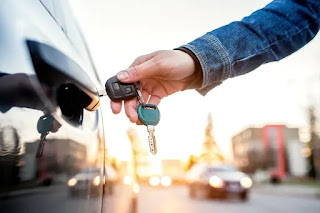Because of the variety of transportation options available, getting around Manila is fairly simple. While Manila covers a large area of approximately 1,475 square kilometers when including its suburbs, the city center is concentrated on the bay shore. The historical center, Manila Intramuros, as well as the majority of the tourist attractions and hotels, are all located here.
Taxis, jeepneys, ride-hailing apps, buses, the Light Rail Transit (LRT), the Metro Rail Transit (MRT), and car rental are all available in Manila. Walking is another option for short distances, but due to the humid climate and a few sketchy neighborhoods, it is not recommended. However, walking in the city's major business districts, shopping districts, and tourist destinations is generally safe.
In Manila, taxis
Taxis are metered and have air conditioning. They have a bad reputation, even among Filipinos, for forgetting to turn on the meter and overcharging their passengers. They're also notorious for not returning the correct change, so keep plenty of small notes on you. The white and green 'MGE' taxis are said to be more reliable.
XEM THÊM :
In Manila, ride-hailing apps such as Grab are available. There is usually a small booking fee - usually around 70 pesos - but the vehicles you get through these apps are generally in better condition, more comfortable, and their drivers are generally more honest.
Manila Jeepneys
Riding a Jeepney is an experience you must have if you visit the Philippines. These customized jeeps are the country's most popular mode of transportation. Prepare to be crammed into these kitschy, brightly decorated vehicles that have become a symbol of the Philippines. They operate similarly to buses, with each Jeepney following a predetermined route. Rates are low, starting at around 8 pesos for a short ride.
Manila's public transportation system
Buses are the most cost-effective mode of transportation in Manila. Because Filipinos typically speak excellent English, determining which bus to take to your destination is simple. Riding the Light Rail Transit (LRT) and Metro Rail Transit (MRT) is also very cheap, but avoid it during weekday rush hours (7am to 9am and 5pm to 9pm).
It's worth noting that most MRT and LRT stations aren't very user-friendly. They are frequently only accessible via a steep staircase, and the escalators frequently fail.
Manila car rental
When visiting Manila on your own, you can rent a car with a driver or drive yourself, and each has its own set of advantages. Hiring a driver is obviously more expensive, but it saves you from having to drive on the streets of Manila yourself. The driver will be able to take advantage of shortcuts and alternate routes due to their local knowledge, and will also be more familiar with the traffic.
Every reputable car rental company has a desk at the Manila Ninoy Aquino International Airport and others throughout Metro Manila. To rent a car in the Philippines, all you need is a valid international driver's license, though some companies also require a credit card from a major brand.
READ ARTICLES :








Không có nhận xét nào:
Đăng nhận xét